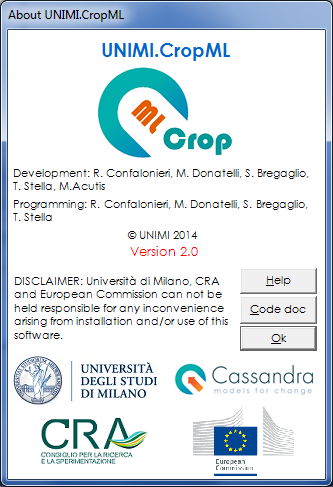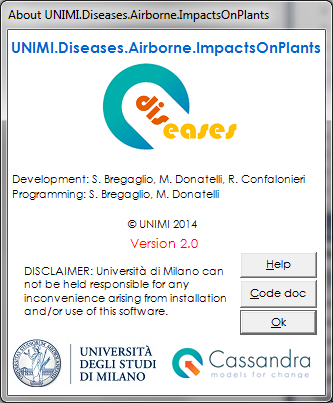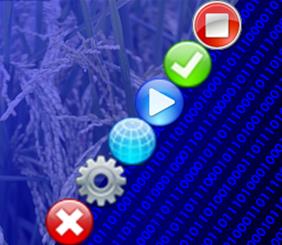Coupling a generic disease model to the WARM rice simulator to assess leaf and panicle blast impacts in temperate climate.
 |
2016 - European Journal of Agronomy, 76, 107-117 |
 |
Bregaglio, S., Titone, P., Cappelli, G., Tamborini, L., Mongiano, G., Confalonieri, R. |
Abstract:
Blast disease (Magnaporthe oryzae B. Couch) is one of the most important causes of rice yield losses worldwide. Although farmers implement countermeasures to limit its impacts, blast disease is still animportant constraint to rice production in both tropical and temperate environments. This study presents the coupling of a generic disease model to the WARM rice simulator to quantify the pathogen impact onkey physiological processes and thus on final yield. The impact of leaf blast was simulated by reducing the photosynthetic leaf area index and in turn radiation interception, as a function of disease progress rate. Panicle blast damage was reproduced by decreasing the percentage of photosynthates translocated to kernels. The modelling solution was calibrated and evaluated using field observations of blast impactat harvest, collected on 20 rice cultivars with different blast resistance and grown in five sites in Northern Italy in the period 1996–2012 (total 272 observations). Results showed a good correlation between simulated impacts (fraction of potential yield) and observations (0–5 scale used for the visual assess-ment, with 0 = no impact and 5 = complete crop failure), for both calibration (R2=0.57) and evaluation (R2=0.51) datasets. Model outputs were converted to the same scale used for the visual assessments toperform an in-depth evaluation of the modelling solution, which exactly matched the 46% of observed impact values, and presented an error of 1 class in 48.2% of the cases. This study demonstrated the soundness of the approach developed for crop-pathogen interactions and its suitability for the application inresearch—e.g., to explore the impacts of climate change on blast-related yield losses —and operational contexts—e.g., to test alternate fungicide strategies to optimize agricultural chemical applications.
 |
Keywords: Biotic damages, disease resistance, pathogen impact, panicle blast, yield losses. |
 |
DOI: 10.1016/j.eja.2016.02.009 |
- Comparison of three calibration methods for modeling rice phenology
- A simple pipeline for the assessment of legacy soil datasets: An example and test with soil organic carbon from a highly variable area.
- A high-resolution, integrated system for rice yield forecasting at district level.
- Downscaling rice yield simulation at sub-field scale using remotely sensed LAI data.
- Analysis and modelling of processes involved with salt tolerance and rice.
- Estimating crop nutritional status using smart apps to support nitrogen fertilization. A case study on paddy rice.
- Development of generic crop models for simulation of multi-species plant communities in mown grasslands.
- Quantifying uncertainty due to stochastic weather generators in climate change impact studies
- Predicting rice blast disease: machine learning versus process-based models
- Boundaries and perspectives from a multi-model study on rice grain quality in Northern Italy.






